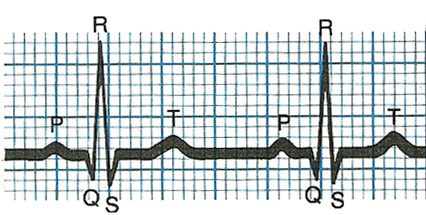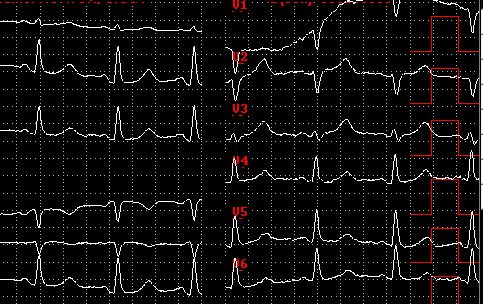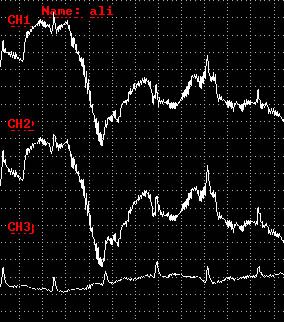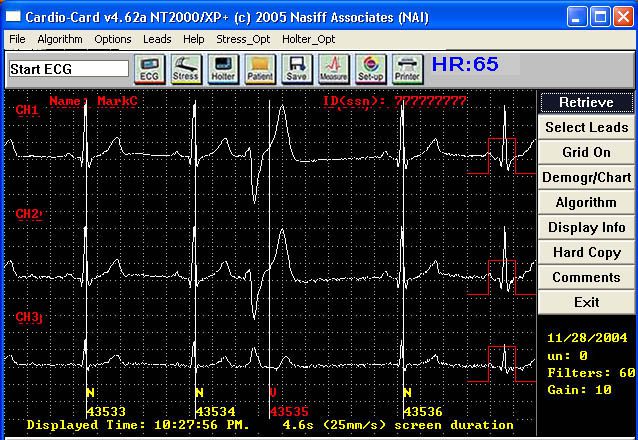ECG Wave and Screen Examples (Figure 13)
Procedure

Example of Normal Wave (labeled)
The normal wave is labeled with different parts p, q, r, s, and t. The "r" is the primary part used for beat detection. The "t" can cause beat detection problems if too "tall".

Example of Baseline "Wander"
This is an indication that the lead is moving relative to the patient. Try replacing the electrode and placing it over a more stable site (e.g. over bone). For Stress and Holter, taping the lead wires down and making a Stress loop and taping it down can help significantly.

Example of V2 Lead Disconnect
or electrode are not making good contact. The electrode should be replaced.

Example of "Noise" in 1st and 2nd Channel
This is an indication that the lead wires or electrodes are not making good contact. The electrodes should be replaced. Note that anelectrode site common to both channels may be the actual problem.

Example of "VE Beat"
Ventricular events (VE, PVC) are wider than normal ECGs. The wave can have many forms. This example illustrates a biphasic wave with the leading part going negative. Others can have positive leading parts.

Example of a "VE Beat" Couplet (2 in a row)

Example of Holter "Marks" and "BeatCodes"
Note the vertical line goes through the "R" waves. At the bottom of the beat are the "BeatCodes" and "BeatNumbers". If you have marks on the "T" waves or a significant number of "R" waves are not marked, go to the CardioDatabaseHolter Monitoringunder Special Considerations and Instructions (SectionIII) of the Holter Monitor Index.

 “
“